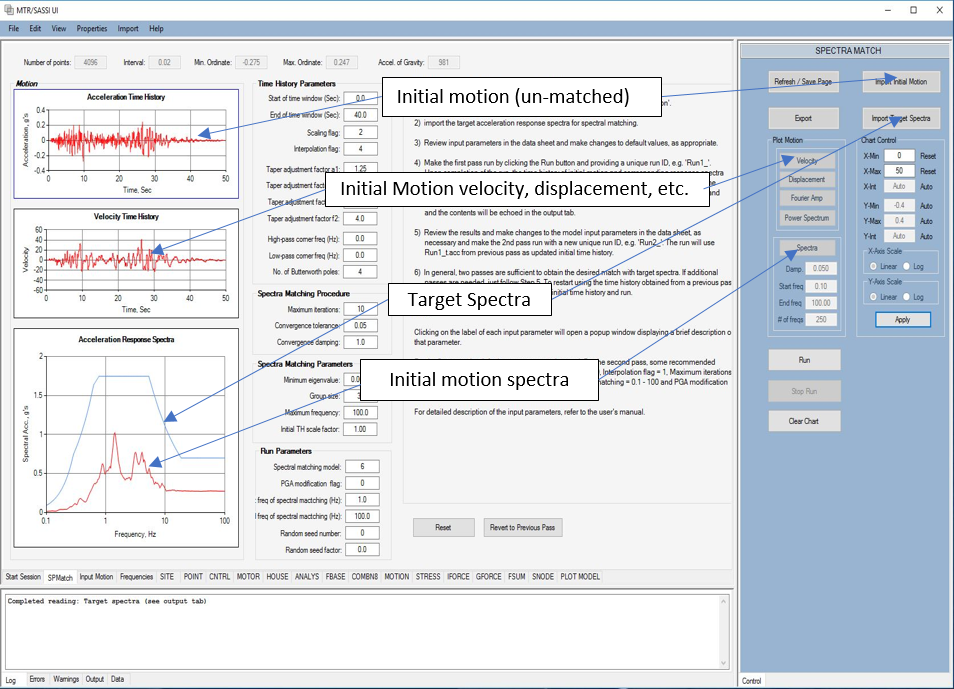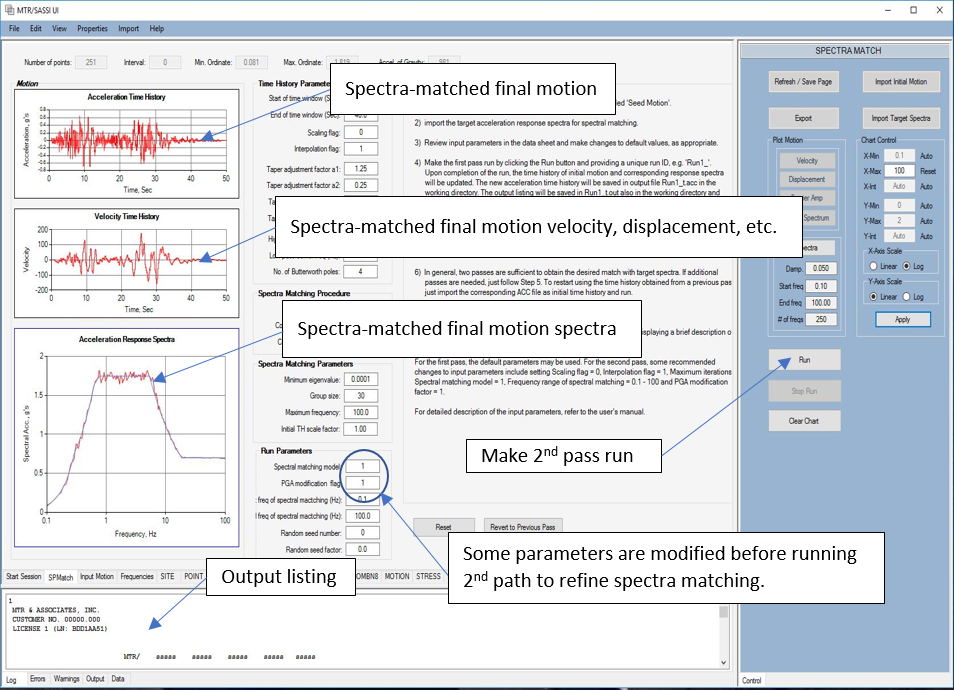MTR/SASSI implements a new capability for time domain modification of an acceleration time history to make it compatible with a user specified broad-band target spectrum. The methodology is based on Lilhanand and Tseng (1988).
Capabilities of Spectra Matching Program
- The new spectral matching module, SPMatch can be executed in an interactive mode or more conveniently via a graphical user interface implemented in MTR/SASSIui.
- The input for the program consists of an initial acceleration time history (also referred to as seed motion), a target acceleration response spectra to be matched over and input parameters for spectra matching.
- In general, two passes with 5 to 20 iterations in each pass are required to match the target spectral amplitudes within certain specified tolerance while preserving the non-stationary phasing of the original motion. Additional passes may be performed for further modification of the time history.
- The results of spectral matching for each pass in terms of the modified time histories of acceleration, velocity and displacement; Fourier amplitude and power spectrum, and acceleration response spectra can be rendered on the screen for review in the GUI.
- In preparation for a new pass, the GUI automatically loads the results from the previous run; so all the user has to do is to modify the input parameters and rerun. The run will be completed very quickly the results are automatically rendered on the screen.
- The spectral matching can be “tight” (i.e. very close match to the target spectra) or “rough” to allow some random variations about the mean target spectra.
- The GUI provides the default values for the input parameters which with minor modifications can be used for the 1st pass. Recommended values for the 2nd pass to refine the spectral match are also provided. However, this does not negate the fact that the user will need to fully familiarize himself/herself with the spectral matching process to arrive at the desired outcome. The description of each input parameter is provided via popup windows that can be opened and viewed in the GUI. Additional details on the input parameters are provided in the user’s guide.
- The final spectra-matched acceleration time histories are saved in the working directory in the format that can be inputted to MTR/SASSI or other codes.
Benchmark Test Problem
A benchmark test problem is used to illustrate the spectral matching process in MTR/SASSIui, as shown below. It basically consists of three steps to upload the initial motion and target spectra and perform two passes with user-defined input parameters to arrive at a spectra-matched time history.
(1) Import initial motion and target spectra, and set input parameters for the 1st
(2) Make 1st pass run, review results and modify parameters for the 2nd
(3) Make 2nd pass run and review results to finalize
References
Lilhanand, K. and Tseng, W.S. (1988), “Development and Application of Realistic Earthquake Time History Compatible with Multiple-Damping Design Spectra” presented at the proceeding of Ninth World Conference on Earthquake Engineering, Tokyo, Japan.



